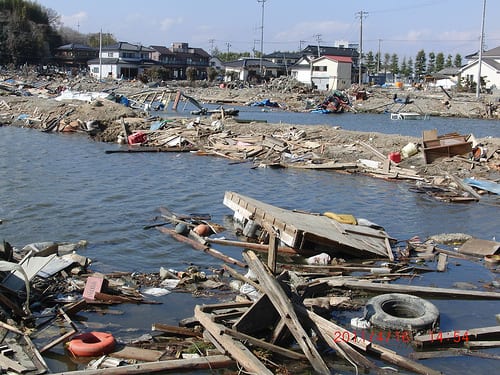Gender and disasters: what causes the risk gap?
By news editor, on 15 March 2013
![]() Written by Dr Joanna P Faure Walker, UCL Institute for Risk and Disaster Reduction.
Written by Dr Joanna P Faure Walker, UCL Institute for Risk and Disaster Reduction.
On Friday 8 March 2013, the UCL Institute for Risk and Disaster Reduction hosted an open panel discussion on ‘Gender and Disasters’.
The panel was chaired by Dr Ellie Lee (Reader in Social Policy and expert in gender issues from the University of Kent), and comprised: Paula Albrito (Head of the Regional Office for Europe for the UN International Strategy for Disaster Reduction), David Alexander (Professor in Risk and Disaster Reduction, IRDR UCL), and Linda O’Halloran (Director of NGO Thinking Development).
The three panellists provided examples of various natural disasters in which women showed a greater risk to the event than men either through active discrimination or through pre-existing factors.
This greater risk has been demonstrated through death rates, reported injuries and post-disaster violence. Questions were raised regarding how this inequality should be addressed. Suggestions were made regarding specific gender-related issues in risk and disaster management and the need for education in such programmes.
However, how this should be done and whether there should be a gender-specific programme – either formal or informal – within resilience programmes remained unresolved.
Questions were asked about whether differences in behaviours between the genders in disasters could affect their relative vulnerabilities; however, I did not hear any evidence-based or convincing arguments to support this.
It was highlighted that an individual’s economic status will likely affect their risk in relation to a disaster: the 2011 Great East Japan Earthquake clearly showed an example of this, as cheaper properties on lower ground were more susceptible to the tsunami than more expensive housing in the hills.
It was also noted that there was effectively no gender risk bias for disasters in Sweden – a country with one of the most equal societies with respect to gender. More research is needed comparing the relationship between gender equality and the gender-related disaster risk gap.
My belief is that, in relation to disasters, it is unlikely that there would be any significant gender risk gap if there were absolute socio-economic equality between the genders.
I am thus suggesting that the gender risk gap is a consequence of socio-economic inequality rather than gender. Hence, by directing efforts towards promoting gender equality, specifically addressing the gender-related disaster risk gap becomes unnecessary.
 Close
Close


